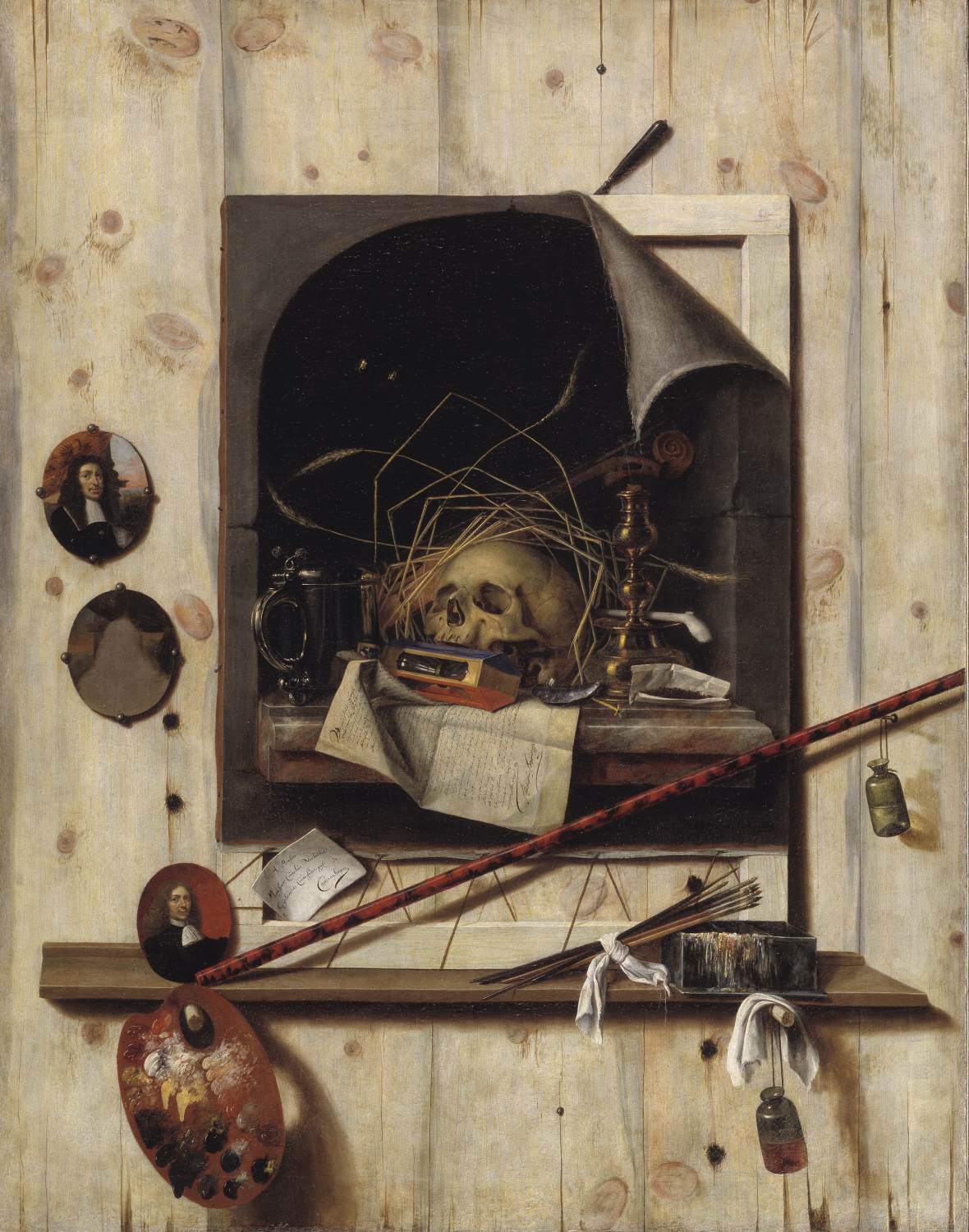Description
The Trompe-l'oeil with Studio Wall and Vanitas Still-Life painting by Cornelis Norbertus Gijsbrechts is a 17th-century masterpiece notable for its optical illusion technique. The artist manages to create an illusion of depth and three-dimensionality in the painting that makes the objects appear to come out of the wall.
The composition of the work is impressive, with a large number of objects arranged in an orderly and careful way in space. The studio wall appears to be littered with tools and objets d'art, while the still life in the foreground displays a variety of symbolic objects, including a skull, clock, and candle.
The use of color in the painting is subtle but effective, with warm, earthy tones creating a feeling of warmth and comfort. The light and shadows are also well worked, which contributes to the feeling of depth and realism in the work.
The history of the painting is fascinating as it is believed to have been created as a prank to fool visitors to the artist's studio. The optical illusion is so effective that objects appear real, making it difficult to distinguish what is real and what is not.
An interesting and little-known aspect of the painting is that Gijsbrechts was actually a Flemish artist working in Denmark in the 17th century. His artistic style is characterized by precision and attention to detail, making him a master of trompe-l'oeil.
In summary, Trompe-l'oeil with Studio Wall and Vanitas Still-Life is an impressive work noted for its optical illusion technique, carefully ordered composition, and subtle yet effective use of color. The story behind the painting and the artist's ability to trick the eye of the beholder make it a fascinating and intriguing work.

